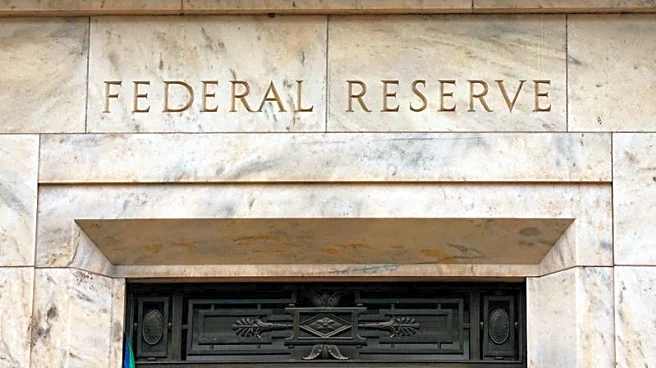What's Happening?
The Federal Reserve has reduced interest rates by 25 basis points to a range of 4.00-4.25% in mid-September, responding to slowing economic growth and job gains. Despite this move, inflation remains above the Fed's target, with the Consumer Price Index (CPI) showing a year-over-year increase of 2.9% in August. This persistent inflation, driven partly by tariff-induced price pressures, has led to concerns among traders about the potential for further rate cuts. The Fed's decision comes amid a backdrop of high valuations in the stock market, with the S&P 500 up approximately 13% in 2025. Additionally, new tariffs on goods from China and other countries are contributing to global inflation fears.
Why It's Important?
The Federal Reserve's rate cut is significant as it aims to support economic growth and employment in the face of rising inflation. However, the persistent inflation above the Fed's target limits the scope for aggressive rate cuts, which could impact borrowing costs and investment decisions across various sectors. The ongoing trade tensions and tariffs could further exacerbate inflationary pressures, affecting consumer prices and corporate profitability. The stock market's high valuations suggest potential volatility if companies fail to meet earnings expectations, which could lead to broader economic implications.
What's Next?
The Federal Reserve has signaled the possibility of further rate cuts, but the timing remains uncertain due to the high inflation risks. Market participants are closely watching upcoming economic data, including the personal consumption expenditures (PCE) inflation report, which could influence the Fed's future policy decisions. Additionally, the implementation of new tariffs and trade deals will continue to shape the economic landscape, with potential impacts on consumer prices and corporate strategies.
Beyond the Headlines
The Federal Reserve's actions highlight the delicate balance between supporting economic growth and managing inflation. The ongoing trade tensions and tariffs underscore the interconnectedness of global economies and the potential for geopolitical shifts to impact domestic economic conditions. As the Fed navigates these challenges, the broader implications for monetary policy and economic stability remain a key focus for policymakers and market participants.











